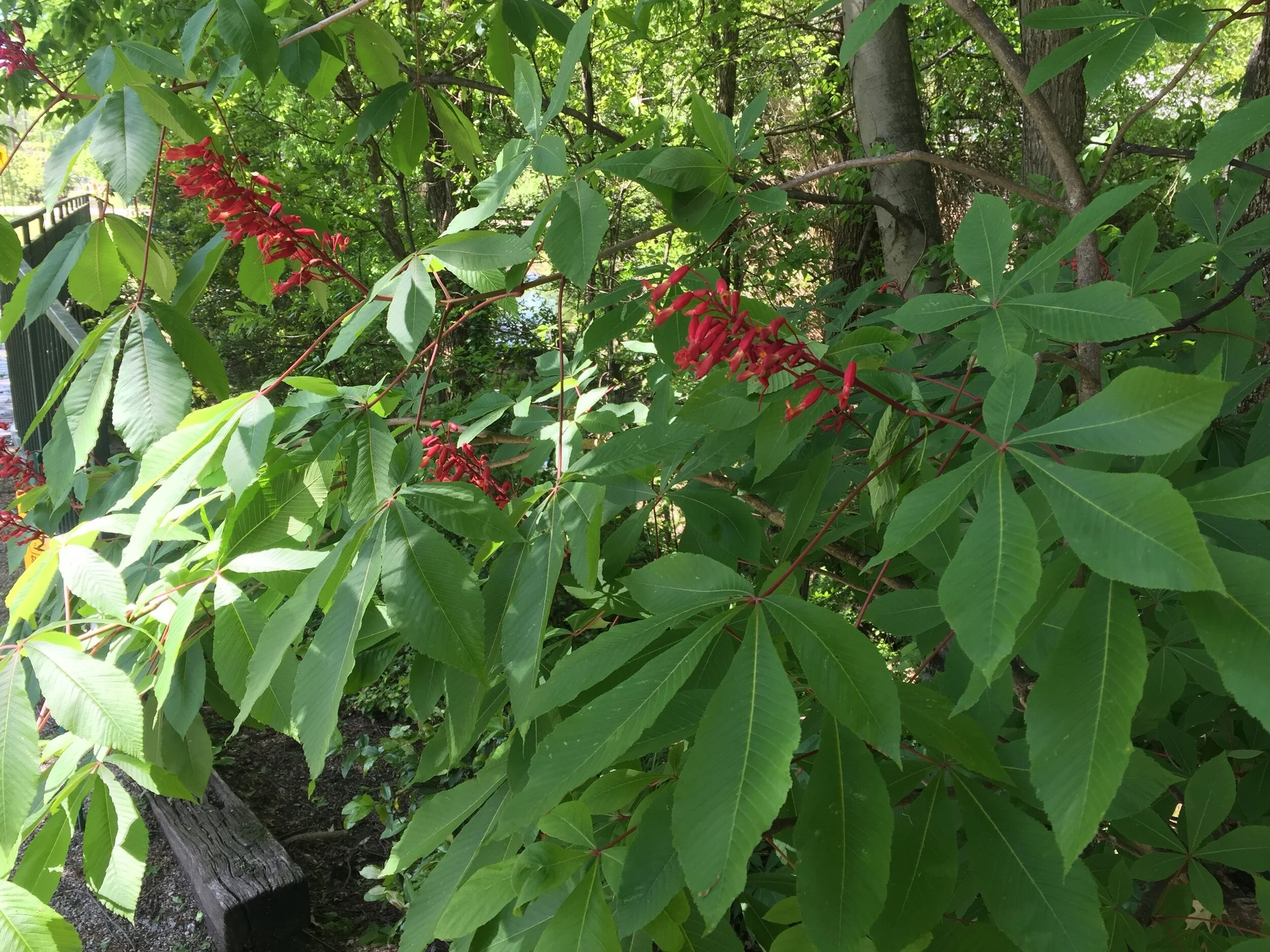Aesculus pavia, commonly called Red Buckeye, is a deciduous clump-forming shrub or small tree native to the southeast. It provides year-round interest and can be found among the under-story plants below taller shade trees, especially in wetter areas.
The red blossoms in spring are tube-shaped along a spike and they are attractive to pollinators, especially hummingbirds. The shiny deep green leaves are attractive in spring and early summer.
Red Buckeye produce seeds called “buckeyes” due to the white stripe on the mature seeds that resembles a deer’s eye. The seeds are poisonous and should not be eaten as are the leaves.
By late spring they have finished blooming and remain until fall with deep green foliage. On the Greenline they are prominent in the area near Lick Creek Bridge between Auburndale and Evergeen.
Aesculus pavia is a part of the V&E Greenline Arboretum Project.
Where to find this plant
Many locations along the trail, as shown above near the Lick Creek Bridge.
The V&E Greenline counts on individuals like you to help keep the trail clean, safe, and enjoyable for everyone. Please join our community of supporters who play an essential role in caring for all of our essential trees, plants, and features along the trail.
Information provided by the University of Kentucky School of Horticulture and the Arbor Day Foundation.


